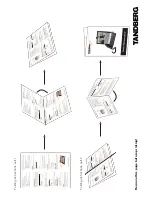
.
(
$
Your cellular mobile phone is a
low power
radio transmitter and receiver
. When it is
operating, it sends and receives radio waves.
The radio waves carry your voice or data signal to a
base station that is connected to the telephone
network. The network controls the power at which
the phone transmits.
•
The GSM network controls transmission
power (0.01 to 2 watts).
•
Your phone complies with all relevant safety
standards.
Your cellular mobile phone is your
responsibility
.
To avoid damaging yourself, to others or to the
phone itself, read and follow all the safety
instructions and make them known to anyone
borrowing your phone. Furthermore to prevent
unauthorised use of your phone:
Keep your phone in a safe place and keep it
out of small children's reach.
Avoid writing down your PIN code. Try to
remember it instead.
Switch off the phone and remove the battery if you
are going to leave it unused for a long time.
The design of your phone complies with all
applicable laws and regulations. However
your phone may cause interference with other
electronic devices. Consequently you should follow
all
local recommendations and regulations
when
using your cellular phone both at home and when
away.
Regulations on the use of cellular phones
in vehicles and aircraft are particularly
stringent.
Public concern has been focused for some time on
the possible health risks for users of cellular phones.
The current research on radio wave technology,
including the GSM technology, has been reviewed
and safety standards have been drawn up to ensure
protection from exposure to radio wave energy.
Your cellular telephone
complies with all
applicable safety standards
and the Radio
Equipment and Telecommunications Terminal
Equipment Directive 1999/5/EC.
*
Inadequately protected or
sensitive electronic
equipment
may be affected by radio energy. This
interference can lead to accidents.
Содержание CT0298BLK
Страница 3: ... 0 1 2 2 3 4 5 6 7 1 8 8 7 7 6 ...
Страница 4: ... 9 8 2 7 3 9 7 9 9 2 5 7 6 9 6 6 6 ...













































